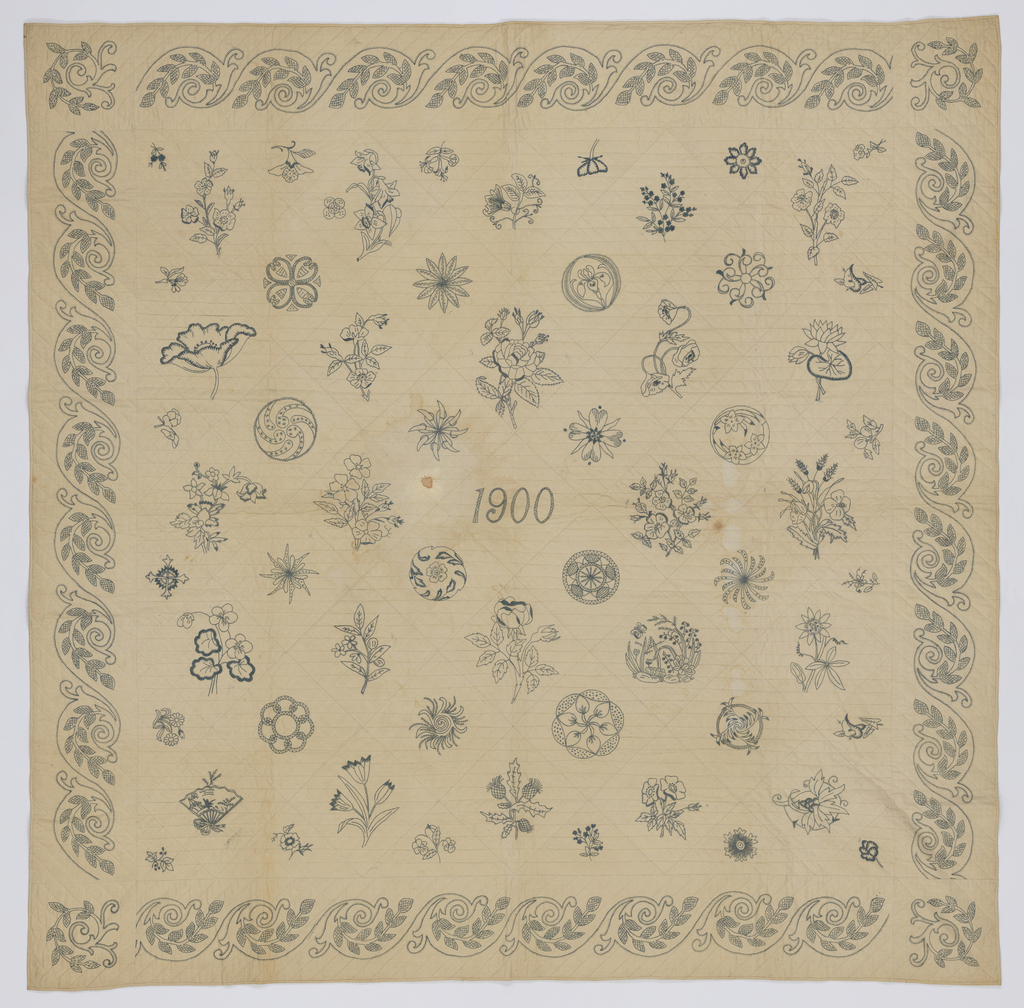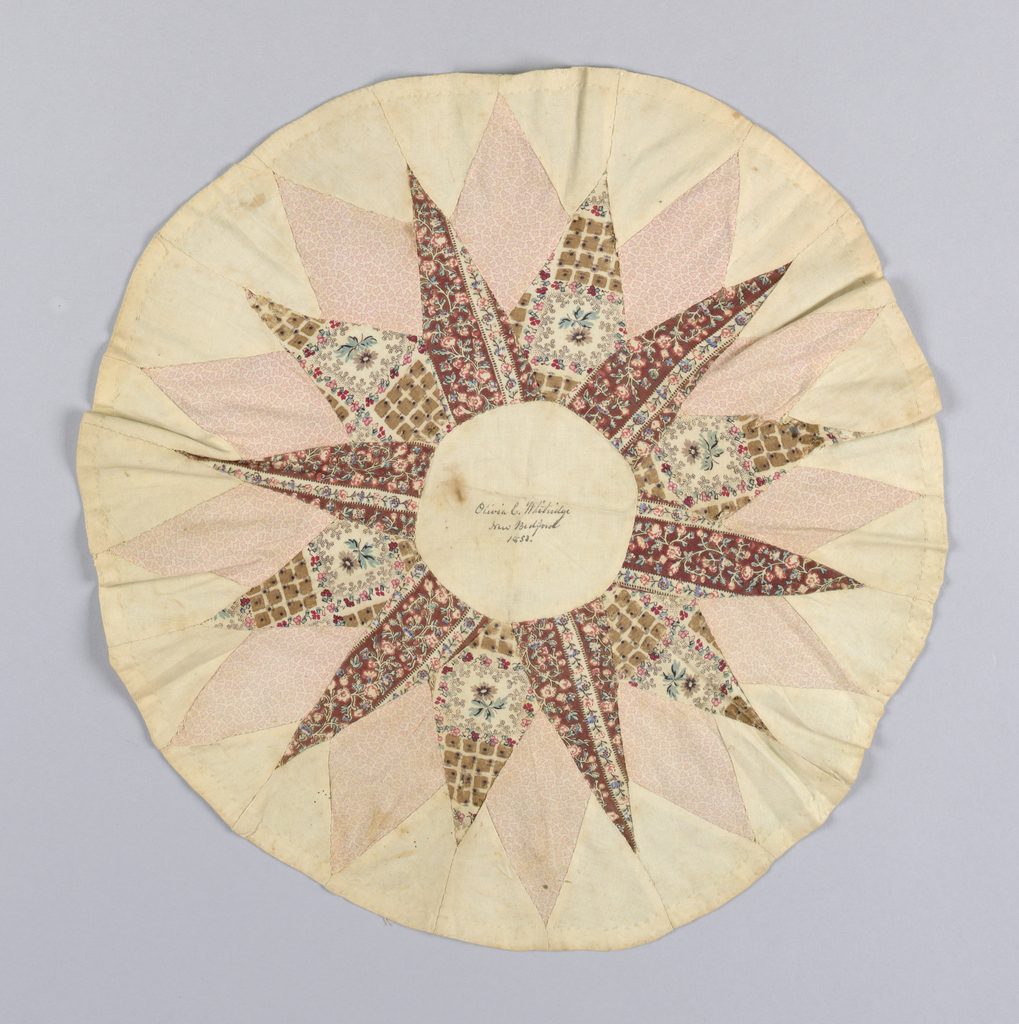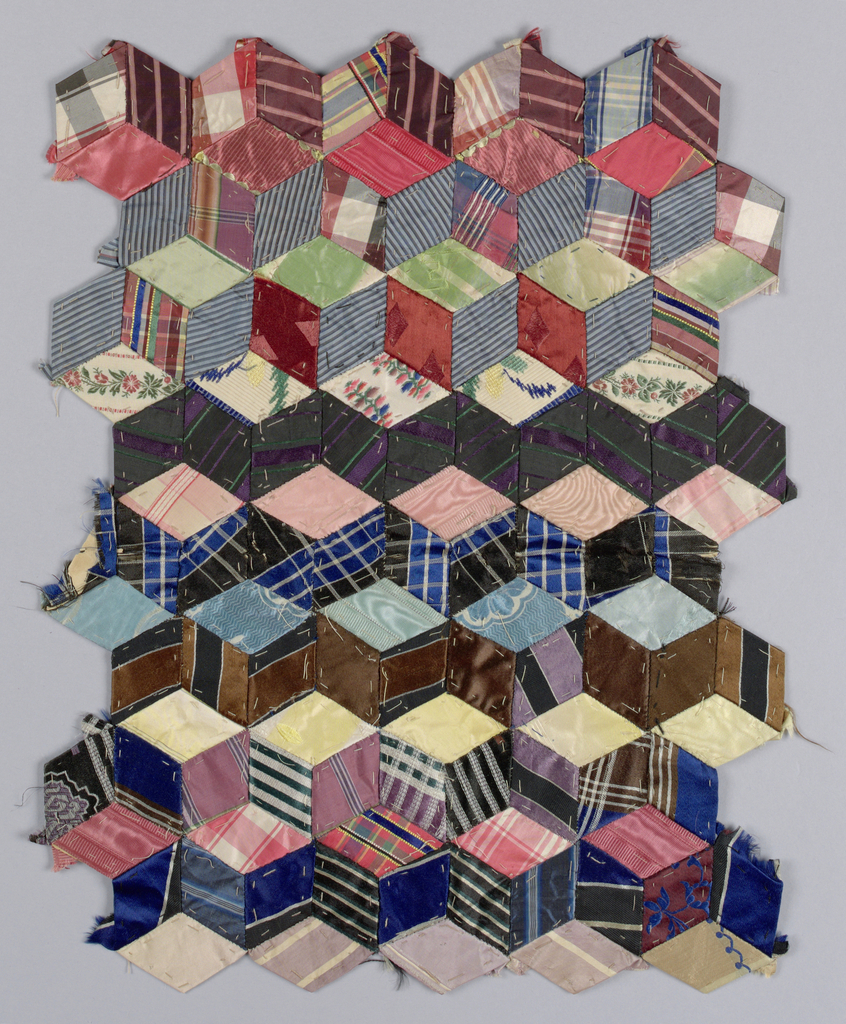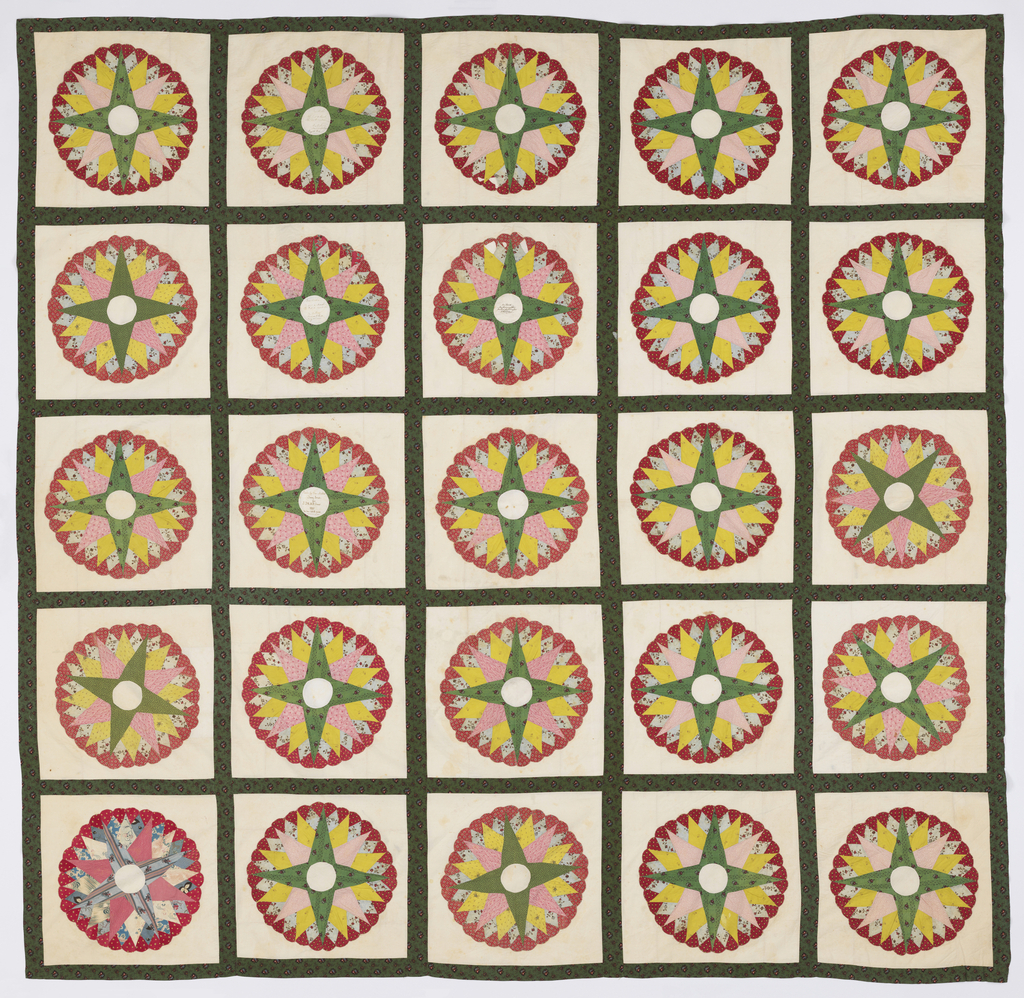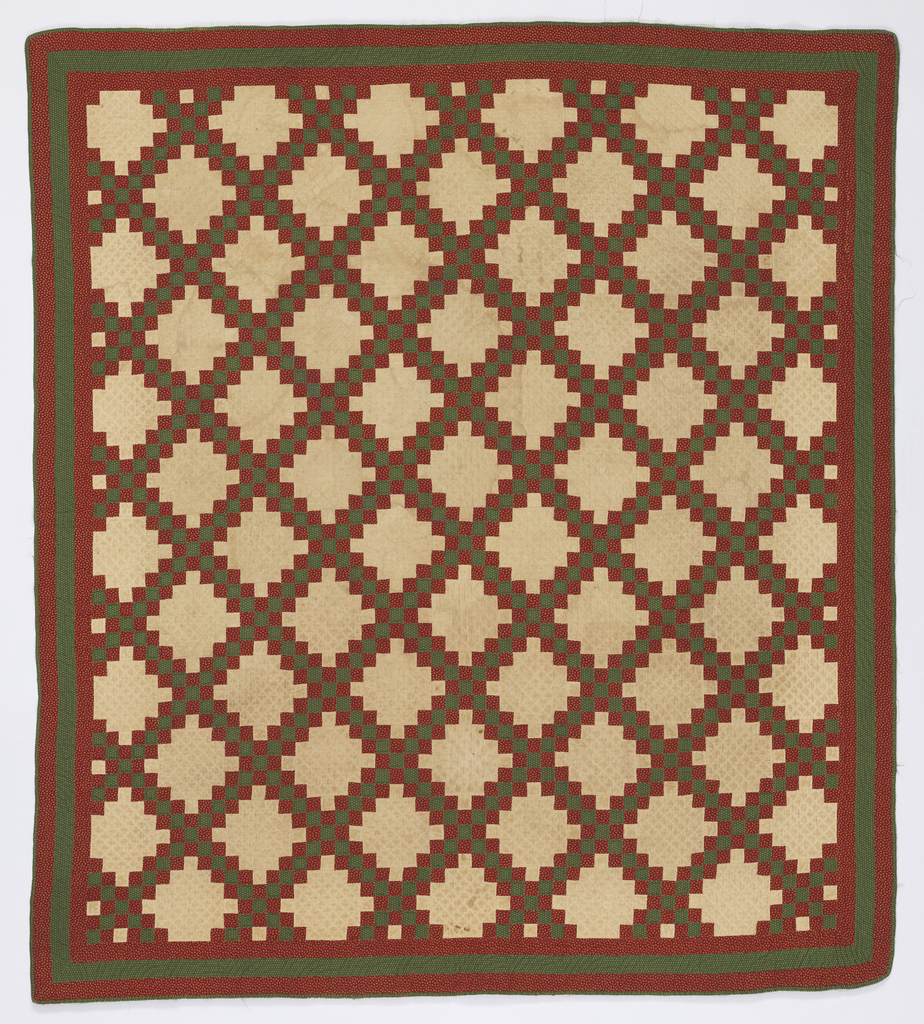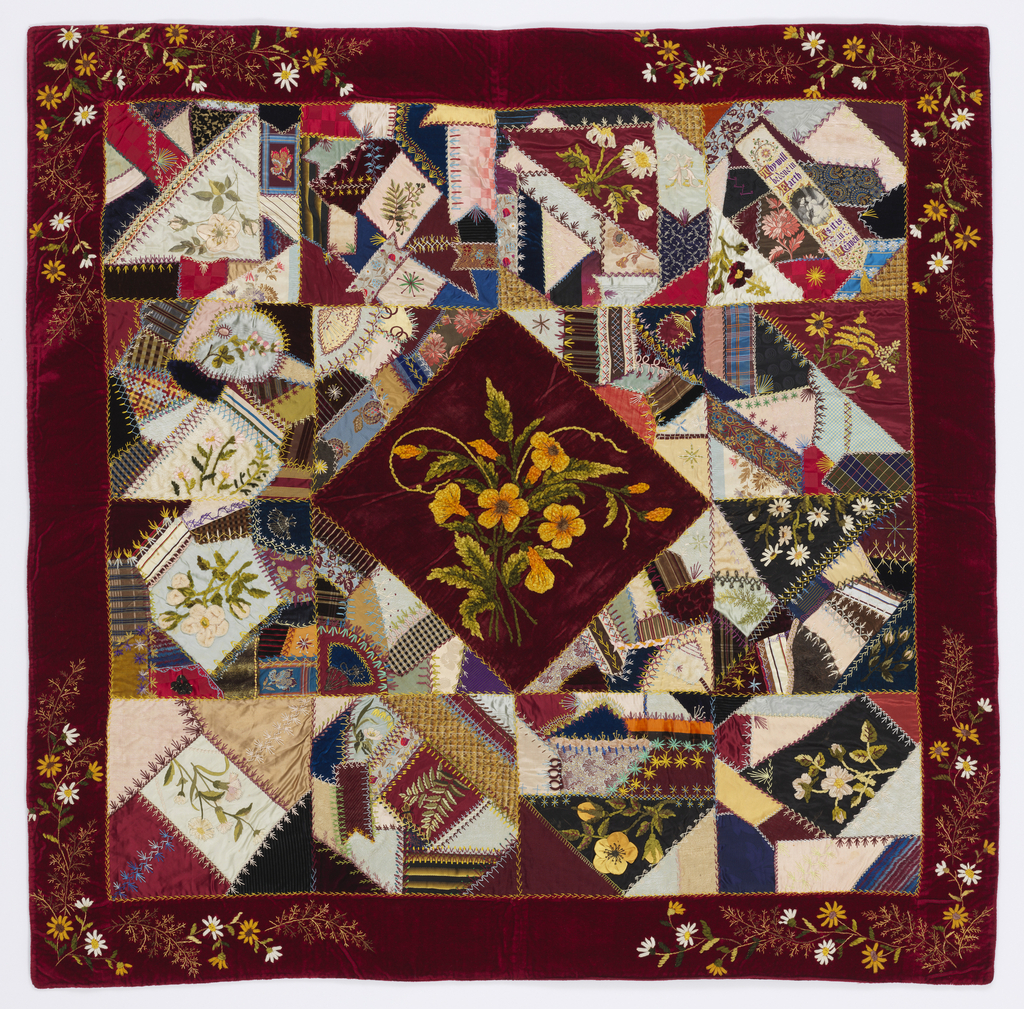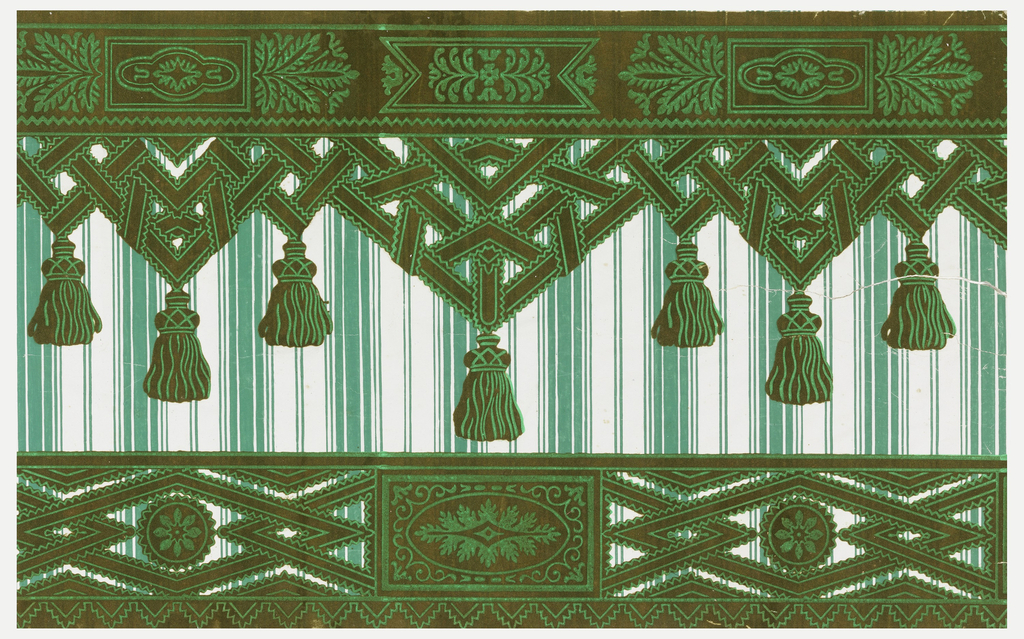Donated to Cooper Hewitt, Smithsonian Design Museum by New York-based textile dealer Elinor Merrell, this bedcover offers an opportunity to see how motifs employed in America were influenced by distant cultures. In the hands of a highly skilled needle-worker deft at using stem-stitch, satin-stitch, and button-hole stitch techniques, a rare coverlet was created. This block-style...
Olivia Cushing Whitridge (1783-1876) was born to a prominent New England family with ties to Massachusetts, Rhode Island and Maine. She married William Whitridge, and the couple lived in New Bedford, Massachusetts. It was in New Bedford, a whaling town, that Olivia C. Whitridge created this “Mariner’s Compass” patchwork medallion. The Mariner’s Compass pattern “was...
“Tumbling Blocks” is one of the most recognizable quilt patterns. As popular today as it was from the mid to late 1800s, it is a requisite pattern for any quilt collection. The roots of the pattern date back far longer than its use for American quilts. Tumbling Blocks has a long history in the grammar...
A very special family quilt in the Mariner’s Compass pattern was given to Cooper Hewitt, Smithsonian Design Museum by Susan Weitzman in 1972. Thanks to thoughtful, easy to read, handwritten inscriptions found on three of the twenty-five squares that make up the quilt, we know that Lacy Jones made the quilt in 1845, and that...
For centuries, quilt patterns and quilting techniques have been passed down from generation to generation and within generations, from sister-to-sister, cousin-to-cousin, or friend-to-friend. Without formal training, many quilters relied on their more experienced relatives to teach them the best methods. The museum is fortunate to have two quilts from the same family, the Reeds of...
Cooper Hewitt is fortunate to have in its collection two quilts made by close relatives: Caroline Hammond Reed and her daughter-in-law, Frances Kingsley Reed, from Anderson, South Carolina. Both quilts were donated by Helen Allen Stanbury, a New Yorker who was a native of Anderson. Frances Kingsley Reed (1845–1902), wife of Caroline Hammond Reed’s son...
Elinor Merrill was the pre-eminent New York dealer of antique European textiles and wallcoverings. A specialist in French textiles, Merrill served as a consultant to the Metropolitan Museum of Art and to the Art Institute of Chicago. She also assisted in the development of the collections of the Cooper Hewitt and the Winterthur museums. After...
